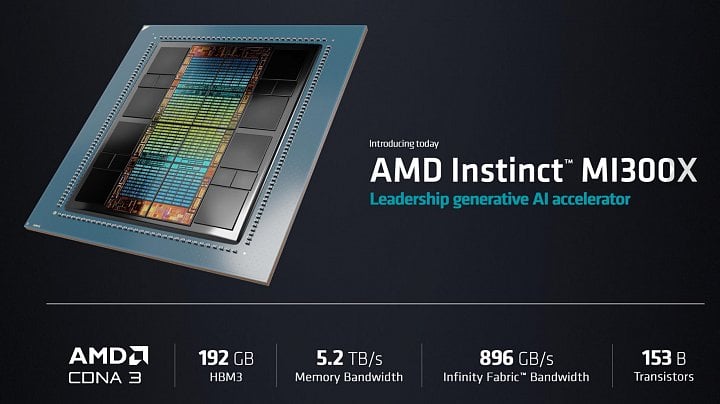AMD Scores Two Big Wins: Oracle Opts for MI300X, IBM Asks for FPGAs

Unlike its rival Nvidia, AMD has yet to significantly capitalize on the rise of artificial intelligence (AI), but it looks like the company is going to win some major contracts with leading providers of cloud services. As it turns out, Oracle is set to use AMD's Instinct MI300X AI and HPC GPUs for its cloud services, reports MT Newswires (via Reddit) citing UBS. And IBM is expected to use AMD's Xilinx FPGA solutions for AI workloads, reports Medium (via Ming-Chi Kuo).
Oracle's cloud infrastructure is grappling with Nvidia GPU shortages, affecting its short-term growth, as noted by UBS. Despite this, Oracle remains optimistic, planning a considerable expansion of H100 GPU deployment by 2024 and deploying AMD's Instinct MI300X processors as an alternative solution.
Oracle has reportedly decided not to sidestep AI and HPC GPU shortages by starting its own silicon program, as it would take years to come to fruition. Instead, the company is setting its sights on AMD’s Instinct MI300X offerings, which promise to offer formidable performance level. The cloud giant is expected to be among the first to deploy these processors in early 2024.
Oracle is not the only company that is looking beyond Nvidia for its AI endeavors. IBM's new AI inference platform uses the NR1 AI chip from NeuReality, which is fabricated using TSMC's 7nm-class process technology. AMD plays an important role by providing the FPGA components essential for NeuReality’s AI solution, a contribution that is set to benefit owing to the robust infrastructure established by IBM's AI inference platform. Foxconn is expected to start production of AI servers employing this technology in the fourth quarter of 2023.
Get Tom's Hardware's best news and in-depth reviews, straight to your inbox.

Anton Shilov is a contributing writer at Tom’s Hardware. Over the past couple of decades, he has covered everything from CPUs and GPUs to supercomputers and from modern process technologies and latest fab tools to high-tech industry trends.